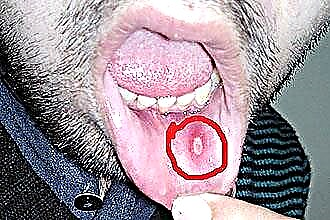The auricle is almost entirely cartilage. The shape of the outer ear, which has a rather complex shape, in the form of a funnel, depends on its relief. It should be noted that the structure of the organ of hearing is individual for each person. The auditory meatus, which is a continuation of the shell cartilage, also consists of cartilage tissue. It has the shape of a gutter that is open backward and upward at the same time.
Based on the above, it is obvious that the ear cartilage underlies the outer part of the hearing organ. Let's consider in more detail its anatomical structure and the functions that it performs.
What does the ear cartilage consist of?
The cartilage in the ear is almost entirely made up of a specific tissue called cartilage. It is represented by components of 2 types:
 non-cellular;
non-cellular;- cellular.
It must be said that the basis of the cartilage tissue is precisely the non-cellular elements. They represent its most important and functional link. In turn, these components are divided into:
- structures (distinguish between collagen and elastic);
- base substance.
The collagen structure consists of a special protein - collagen. By the way, it is a real building material for all fibrous structures present in cartilage tissue - molecules, microfibrils, fibrils and, finally, fibers. As for the elastic structure, it is present in the outer part of the ear:
- amorphous elastin;
- microfibrils (plastic);
- fibers and fibrils - elastic;
- molecules of substances such as elastic glycoprotein and elastin.
Both the non-cellular and cellular components that make up the ear cartilage seem to float in the basic substance, which is the metabolic environment. It performs an integrative and buffering function. It resembles a gel in consistency. It consists of proteoglycans and water, which they retain and through which all metabolic processes proceed.
An important component of the tissue of the ear cartilage is the so-called intercellular space between the fibers and cells - the matrix. This is a whole unified system of a kind of channels. Their walls are represented by a fibrous structure. Under the microscope, they appear in the form of small tubes, round cavities and slits. This channel system is filled with the already mentioned basic substance. If non-cellular components are considered the first and fundamental link in the cartilaginous tissue, then the matrix is considered to be the 2nd link. Through the channels of this space, under the influence of mechanically exerted pressure, as well as the forces of osmosis and capillaries, interstitial fluid moves. Due to the uninterrupted process of this process, full-fledged metabolism and biomechanics of the ear cartilage tissue are provided.
 Regarding the cellular components, it should be noted that they directly build cartilaginous tissue, and also actively participate in its constant regeneration and subsequent restoration. So, these components are presented:
Regarding the cellular components, it should be noted that they directly build cartilaginous tissue, and also actively participate in its constant regeneration and subsequent restoration. So, these components are presented:
- cambial cells;
- chondroblasts;
- chondrocytes
Thus, it becomes clear that the cartilage that forms the auricle and the external auditory canal belongs to elastic cartilage, which has all the properties necessary for the normal functioning of this part of the ear.
Knowledge of its internal structure is important for understanding the processes that occur in it, and the ability to distinguish normal from pathological.
Functions
Cartilage in the ear has 3 main functions:
- maintains a constant shape of the auricle;
- takes part in the development and growth of bone tissue (by and large, it is its predecessor);
- biomechanical - carried out due to such properties of cartilage tissue as firmness and elasticity.
Post factum
 As you can see, the anatomical structure of the ear cartilage is very complex. Its integrity and proper functioning are extremely important for the proper functioning of the hearing organ and overall well-being. Therefore, those wishing to pierce the cartilage in the ear should be aware of all the possible risks of this procedure. Any violation of its integrity can lead to adverse consequences.
As you can see, the anatomical structure of the ear cartilage is very complex. Its integrity and proper functioning are extremely important for the proper functioning of the hearing organ and overall well-being. Therefore, those wishing to pierce the cartilage in the ear should be aware of all the possible risks of this procedure. Any violation of its integrity can lead to adverse consequences.
In order for the ear cartilage to perform all its functions in full, it is necessary to carefully monitor the hygiene of the auricle and the external auditory canal, as well as carefully weigh the pros and cons before deciding on the piercing procedure.

 non-cellular;
non-cellular;

